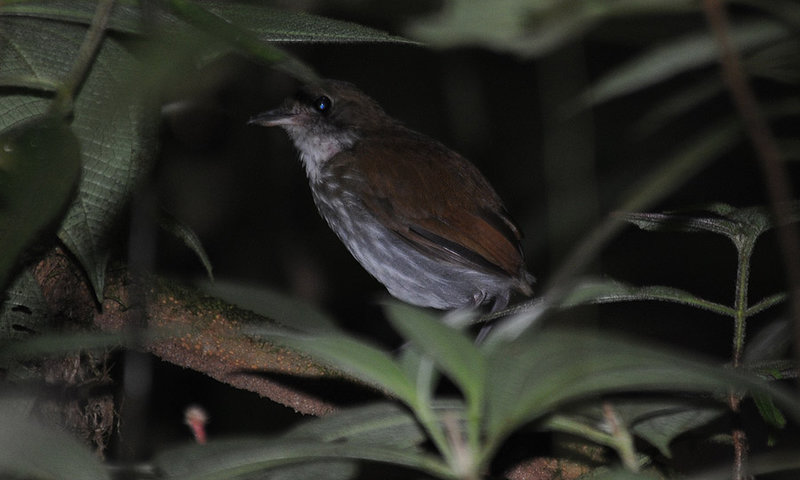
Myrmothera campanisona
TAXONOMY
Myrmothera campanisonam Hermann, 1783.
OTHER COMMON NAMES
French: Grallaire grand-beffroi; German: Fleckenbrust-
Ameisenjдger; Spanish: Chululъ Campanero.
PHYSICAL CHARACTERISTICS
6 in (15 cm), with a black iris, stout bill, and very short tail.
DISTRIBUTION
Amazonian region of northern South America, including
southern Venezuela, Guyana, eastern Colombia, eastern
Ecuador, eastern Peru, northwestern Bolivia, and widely in
Amazonian Brazil.
HABITAT
Below 3,950 ft (1,200 m) in humid tropical forest, especially
where there is dense undergrowth.
BEHAVIOR
Nonmigratory pairs defend a breeding territory. Song of males
is a series of 5–6 whistled notes.
FEEDING ECOLOGY AND DIET
Forage for insects and other arthropods on or very close to the
ground.
REPRODUCTIVE BIOLOGY
Monogamous pairs bond for life, typically lay two eggs, and
share incubation and care of nestlings and fledglings.
CONSERVATION STATUS
Not threatened. Widespread and relatively abundant.
SIGNIFICANCE TO HUMANS
No direct significance, except for the indirect economic benefits
of bird-watching and ecotourism.
Photo Gallery of - Thrush-like ant-pitta




 Animalia Life
Animalia Life